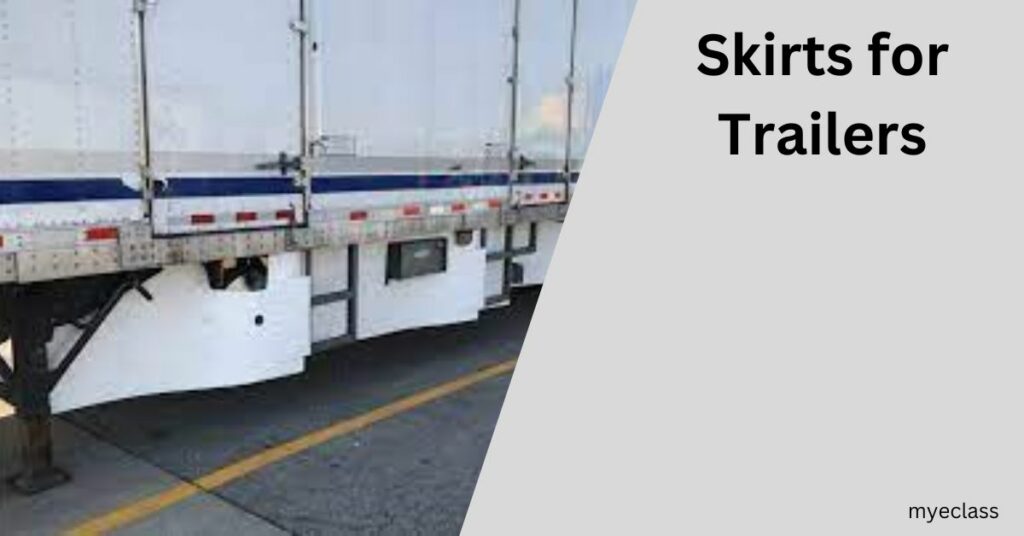Skirts for Trailers: Paving the Way to Enhanced Fuel Efficiency

In the trucking industry, where fuel expenses rank second only to driver salaries as the largest operational cost, the pursuit of fuel-saving measures remains a paramount concern for fleet operators.
Among the solutions gaining prominence in recent times is the adoption of trailer aerodynamic enhancements, with trailer side skirts, also referred to as fairings, leading the charge.
Table of Contents
Unraveling Trailer Efficiency Challenges:
The root of aerodynamic inefficiency in semi-trailer configurations lies predominantly in three areas: the gap between the truck and the trailer, the trailer’s underbody, and the rear section of the trailer. Numerous products have emerged to tackle these issues, but when it comes to proven, industry-preferred solutions, trailer side skirts emerge as the frontrunners.
Read: Edutour2oman – Cultural Guide
According to several industry studies, these skirts have the potential to yield truckers up to a 5% reduction in fuel costs during regular over-the-road (OTR) highway operations. When combined with other fuel-saving enhancements like low rolling resistance tires and tire pressure management systems, fleets might experience up to a 15% enhancement in their fuel efficiency. Nevertheless, the story isn’t always straightforward.
Present-Day Side Skirts:
The encouraging news is that trailer skirts have witnessed substantial advancements over the last two decades. They are now more lightweight, cost-effective, and resilient to damage, rendering them increasingly popular. In fact, it’s estimated that over 50% of all new 53′ vans come equipped with side skirts. Beyond the cost-saving advantages, the surge in side skirt usage is propelled by state and federal regulations aimed at curbing carbon emissions in the trucking sector.

Organizations such as the California Air Resources Board (CARB) and the US Environmental Protection Agency (EPA) have introduced Greenhouse Gas regulations mandating the use of side skirts or approved underbody alternatives in specific cases. While not all trailer types are subject to these regulations, government initiatives promoting trailer aerodynamic enhancements are expected to gain momentum in the years to come.
When They Are Beneficial – and When They Are Not:
While there is a persuasive argument for the adoption of trailer side skirts or other aerodynamic enhancements in most operational scenarios, they may not always guarantee success for every fleet unless dictated by local regulations. Side skirts have been proven to be effective at various speeds, but their advantages become more pronounced at higher, sustained highway speeds.
Read: The Art of Xatpes: A Fusion of Music and Visuals
Lower average speeds or extended trailer pooling periods can prolong the time it takes to recoup the investment, making it more challenging for side skirts to deliver a satisfactory return. Additionally, maintenance costs due to skirt damage may escalate in urban areas with tight operating conditions, and retrofitting older trailers may not always be feasible, considering the remaining useful life.
The maximum benefits of side skirts are realized when trucks face headwinds directly. Crosswinds, or yaw, can impede their aerodynamic benefits and generate additional resistance and drag on the trailer. Furthermore, fleets with a greater proportion of empty miles will inherently consume less fuel than those transporting full loads, extending the “miles to payback” for those with a higher proportion of empty miles.
Beyond the fuel savings, users of trailer side skirts have reported anecdotal performance enhancements, including improved road stability, reduced splashing and spraying, better driver handling, and decreased in-cab road noise.
Summing It Up:
In summary, if your long-haul trailers primarily operate on highways at higher speeds, the addition of side skirts is likely to curtail your fuel costs and deliver supplementary advantages. However, if your trailers mainly operate at lower speeds or spend extended periods parked, a financial analysis or field test may be necessary before committing to a broader fleet conversion.
For a comprehensive guide on computing the return on investment for trailer aerodynamic enhancements, you can consult the “Confidence Report on Trailer Aerodynamics” available on the North American Council for Freight Efficiency (NACFE) website.
If you’re uncertain about the suitability of side skirts for your specific situation, please don’t hesitate to contact our team. We’re here to assist you in devising a customized plan tailored to your requirements.”


